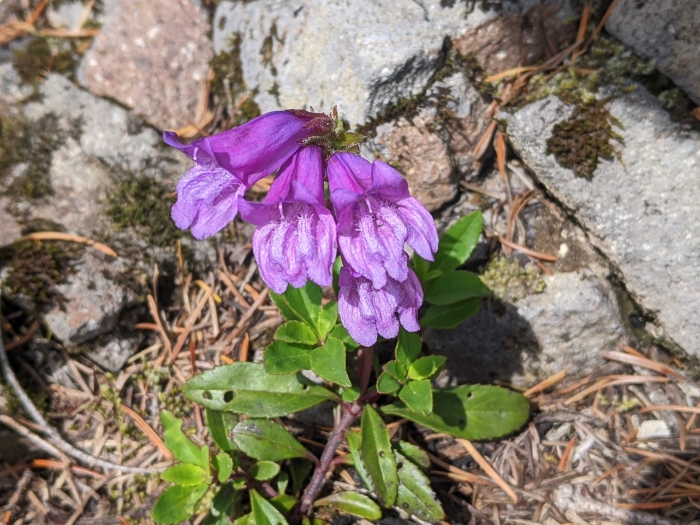Cardwell’s Beardtongue
(Penstemon cardwellii)
Cardwell’s Beardtongue (Penstemon cardwellii)
/
/

Liam Gerry
CC BY 4.0
Image By:
Liam Gerry
Recorded By:
Copyright:
CC BY 4.0
Copyright Notice:
Photo by: Liam Gerry | License Type: CC BY 4.0 | License URL: http://creativecommons.org/licenses/by/4.0/ | Rights Holder: Liam Gerry | Publisher: iNaturalist | Date Created: 2022-07-08T10:53:24-07:00 |






















Estimated Native Range
Summary
Penstemon cardwellii, commonly known as Cardwell’s Beardtongue, is a perennial herb native to the Pacific Northwest of the United States, specifically to the Cascade Range. It is often found in open woodlands, forest edges, and rocky slopes, as well as in alpine and subalpine zones and meadows. This species grows at a moderate rate to a typical height and width of 1-2 feet (0.3-0.6 meters). Cardwell’s Beardtongue has a clumping form with lance-shaped leaves and produces dense clusters of tubular, pink to lavender flowers with a white throat, which are particularly showy in the late spring to early summer months. The flowers are attractive to pollinators such as bees and hummingbirds.
The plant is valued for its ornamental flowers and ability to thrive in challenging garden sites with poor soil. It is used in rock gardens, native plant gardens, and as a border plant. Cardwell’s Beardtongue prefers full sun to part shade and well-drained sandy or loamy soils. It is drought-tolerant once established, making it suitable for xeriscaping. While generally low-maintenance, it can be susceptible to root rot if overwatered or planted in poorly draining soils. It is also important to note that Penstemon cardwellii is not typically aggressive or invasive when grown outside its native range.CC BY-SA 4.0
The plant is valued for its ornamental flowers and ability to thrive in challenging garden sites with poor soil. It is used in rock gardens, native plant gardens, and as a border plant. Cardwell’s Beardtongue prefers full sun to part shade and well-drained sandy or loamy soils. It is drought-tolerant once established, making it suitable for xeriscaping. While generally low-maintenance, it can be susceptible to root rot if overwatered or planted in poorly draining soils. It is also important to note that Penstemon cardwellii is not typically aggressive or invasive when grown outside its native range.CC BY-SA 4.0
Plant Description
- Plant Type: Shrub, Herb
- Height: 1-2 feet
- Width: 1-2 feet
- Growth Rate: Slow, Moderate
- Flower Color: Pink, Purple
- Flowering Season: Spring, Summer
- Leaf Retention: Deciduous
Growth Requirements
- Sun: Full Sun, Part Shade
- Water: Low, Medium
- Drainage: Fast, Medium
Common Uses
Bird Garden, Butterfly Garden, Deer Resistant, Drought Tolerant, Low Maintenance, Rock Garden, Showy Flowers
Natural Habitat
Native to open woodlands, forest edges, rocky slopes, and alpine and subalpine zones in the Cascade Range
Other Names
Common Names: Cardwell’s Penstemon, Cascade Penstemon
Scientific Names: , Penstemon cardwellii, Penstemon fruticosus subsp. cardwellii,
GBIF Accepted Name: